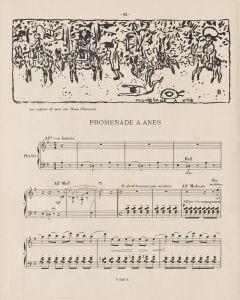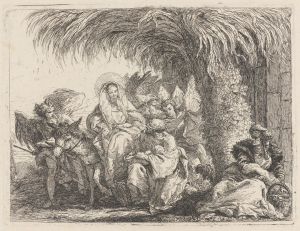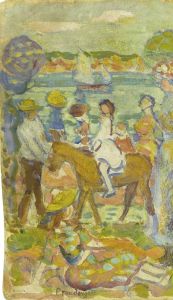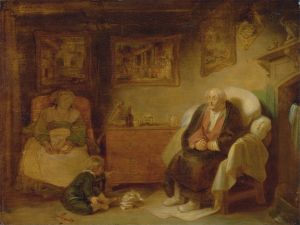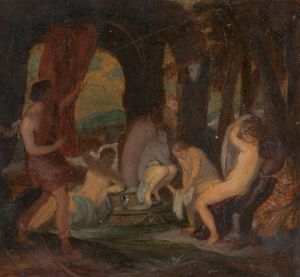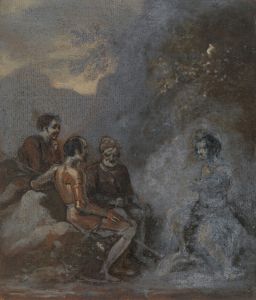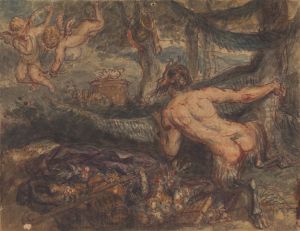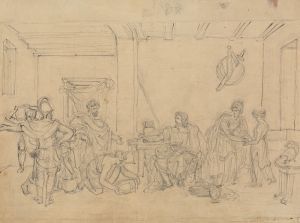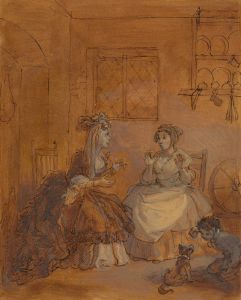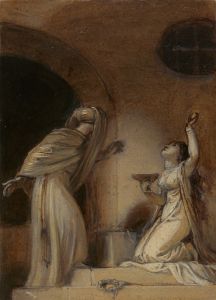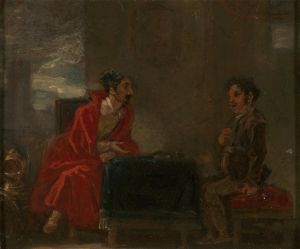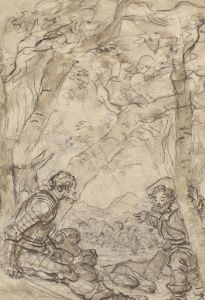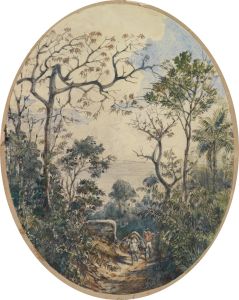
Illustration for Don Quixote
A hand-painted replica of Robert Smirke’s masterpiece Illustration for Don Quixote, meticulously crafted by professional artists to capture the true essence of the original. Each piece is created with museum-quality canvas and rare mineral pigments, carefully painted by experienced artists with delicate brushstrokes and rich, layered colors to perfectly recreate the texture of the original artwork. Unlike machine-printed reproductions, this hand-painted version brings the painting to life, infused with the artist’s emotions and skill in every stroke. Whether for personal collection or home decoration, it instantly elevates the artistic atmosphere of any space.
Robert Smirke was an English painter and illustrator, known for his works that often depicted scenes from literature and history. One of his notable contributions to the world of art is his series of illustrations for Miguel de Cervantes' classic novel, "Don Quixote." These illustrations are celebrated for their detailed and expressive portrayal of the novel's characters and events, capturing the essence of Cervantes' narrative with both humor and pathos.
Smirke was born in 1752 and became a member of the Royal Academy in 1792. His artistic career was marked by a keen interest in literary subjects, which made him a fitting choice for illustrating "Don Quixote." The novel, originally published in two parts in 1605 and 1615, follows the adventures of the titular character, Don Quixote, a nobleman who becomes a self-styled knight-errant, and his loyal squire, Sancho Panza. The story is renowned for its satirical take on chivalric romances and its exploration of themes such as reality versus illusion.
Smirke's illustrations for "Don Quixote" were created in the late 18th century, a time when the novel was experiencing renewed popularity in England. His work was part of a larger trend of illustrated editions of classic literature, which sought to make these works more accessible and engaging to the public. Smirke's illustrations were included in a deluxe edition of "Don Quixote," published in multiple volumes, which featured both his artwork and a translation of the text.
The illustrations themselves are characterized by their attention to detail and their ability to convey the humor and absurdity of Don Quixote's adventures. Smirke's style is marked by a delicate line and a careful composition, which bring the characters and scenes to life. His depiction of Don Quixote often emphasizes the character's gaunt, earnest appearance, contrasting with the more grounded and earthy portrayal of Sancho Panza. This visual contrast mirrors the dynamic between the two characters in the narrative, highlighting the novel's exploration of idealism and pragmatism.
Smirke's work on "Don Quixote" is also notable for its historical accuracy in terms of costume and setting, reflecting the artist's interest in the period and his commitment to authenticity. This attention to detail helps to immerse the viewer in the world of the novel, enhancing the storytelling and providing a visual counterpart to Cervantes' rich prose.
Overall, Robert Smirke's illustrations for "Don Quixote" are an important part of the novel's visual history, offering a window into how the story was interpreted and appreciated in the late 18th century. His work continues to be appreciated for its artistic merit and its contribution to the enduring legacy of Cervantes' masterpiece.





